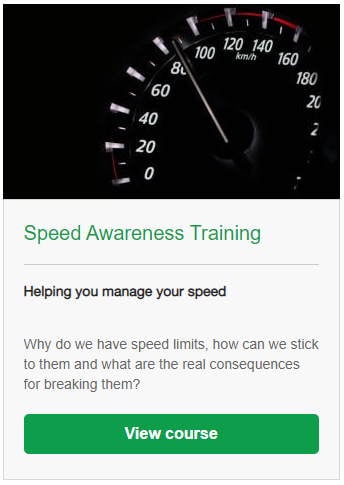The majority of drivers break the speed limit. Mostly it’s deliberate, sometimes it’s accidental. Almost always, it’s not required, but very occasionally it’s to get a driver out of danger (e.g. a misjudged overtaking manoeuvre).
While over 80% of drivers believe that speeding is a contributing factor to road accidents, there’s immediately conflicting evidence for the driver while on the road. Drive at 55km/h in an urban area and you won’t find hordes of pedestrians bouncing off your bonnet. Sneak past a truck at 115km/h and your tyres won’t explode, sending you off the road in a somersaulting ball of flames. Is it cognitive dissonance (where your actions don’t line up with your beliefs)?
Speed choice is primarily attitudinal and circumstantial. It’s related to the opinions, maturity and personality of the driver as well as the prevailing conditions on the road at that time. Younger people may be more likely to take risks due to the pre-frontal cortex finishing development at around age 25. The prefrontal cortex regulates things like attention, impulse inhibition and the understanding of consequences, which is why teenagers can seem reckless.
In extreme cases, a person might speed because of an emergency (rushing a mother in labour to the hospital, for example), but mostly people speed because:
- They don’t care about the danger (i.e. they are comfortable with the elevated risk)
- They don’t perceive it as dangerous (i.e. they are confident in their own skills, their vehicle’s protective features and the current road conditions)
- They have another pressure that seems more important (e.g. late for a meeting or there are other supply chain pressures)
- They like the feeling of speed
- They are not paying attention to their speedometer (this covers most incidences of accidental speeding).
Is the speed limit an appropriate speed?
There are three types of speed defined by road safety professionals:
- Excessive speed – this is above the speed limit
- Inappropriate speed – this is below the speed limit, but too fast for the conditions
- Appropriate speed – this is a safe speed for the conditions
The ability to choose an appropriate speed is assisted by driver training so that drivers can understand developing hazards.
To play devil’s advocate, you can also look at speed like this:
- Not fast enough (you’re a danger to other road users around you because you create an obstruction)
- Just right (you’re in a speed range that means you’re neither impeding traffic or pushing the limits, and there’s a low amount of risk)
- Too fast (you’ve elevated your risk level and/or you’re causing a danger to other road users).
This kind of ‘Goldilocks’ delineation doesn’t talk about speed limits themselves, but more about your speed in relation to other road users, and a consideration of the potential consequences. Again, trying to make a model of speed like this has its limits because of differences in transport methods: cyclists will always be slower than motorists on the open road, but they could potentially be faster than motorists in rush hour.
How does speeding affect drivers in the workplace?
A vehicle is considered to be a place of work. At least 30% of accidents involve drivers driving a work vehicle and as many as 60% of workplace fatalities involve a vehicle (this includes vehicles like forklifts and farm vehicles). An employer is bound under the Health and Safety at Work Act 2015 to provide a safe environment for the employee to work in, and to provide ongoing training, induction, supervision and monitoring.
Where does this leave employers and supervisors when drivers have company vehicles?
Speed limits might seem arbitrary, but they are there for a reason. The best way to understand this is to do our speed awareness training course. It’s an eye-opener for all drivers and will help bring a balanced viewpoint to why people speed.
Course participants will get a deeper knowledge and understanding of the five reasons given above, including how to manage them so they don’t become factors in choosing an inappropriate speed.
This course helps employers fulfill their obligations under the HSWA2015.


